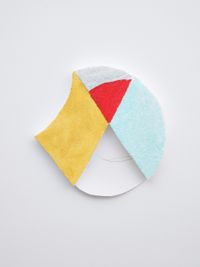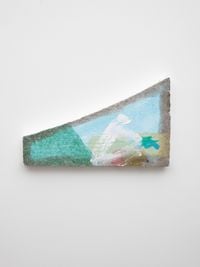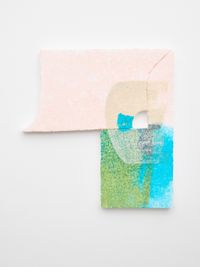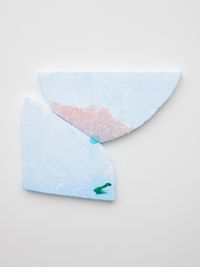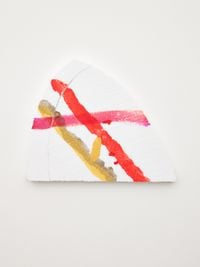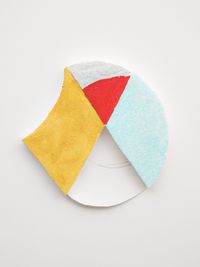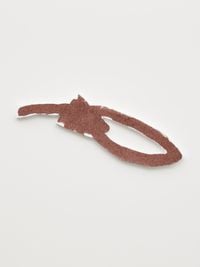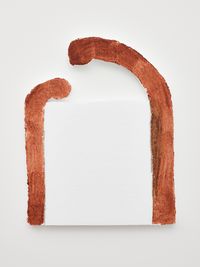American artist Richard Tuttle is recognised for his paintings and sculptures that explore the boundaries of art making. His multidisciplinary practice considers the possibilities of material, method, and medium.
Read MoreTuttle was born in Rahway, New Jersey. In 1963, Tuttle graduated from Trinity College in Hartford with a Bachelor of Arts. Shortly after, he moved to New York City, where he continued his studies and attended The Cooper Union School of Art and Architecture.
While he was living in New York, Tuttle began working as an assistant at The Betty Parsons Gallery. A year later in 1965, Tuttle was invited to show work at the gallery with his first solo exhibition, titled Richard Tuttle: Constructed Paintings.
During the 1960s, Tuttle met and befriended fellow contemporary painter Agnes Martin. Her subtle abstract paintings influenced Tuttle's own artwork. Tuttle was also influenced by his exposure to the Pop art movement and the beginnings of Minimalism, two genres that prepared him for artistic change and reinvention.
Richard Tuttle's artwork subverts the traditions of Modernism and Minimalism. His often small and restrained compositions engage with scale and alternative systems of display. By refusing the limitations of Minimalism, Tuttle creates a dialogue that focuses on the importance of craft and favours humble materials such as wire, paper, cloth, and wood.
In 1970, Tuttle created 'Paper Octagonals' (1970), 12 works made from paper shapes cut from a template and glued to a wall. When displayed, Tuttle intended 'Paper Octagonals' to disappear into the wall as much as possible.
Despite the artwork's thin material and lack of colour, the 'Paper Octagonals' are oddly present due to their misshapen composition. Tuttle's delicate work is neither painting nor sculpture. Instead, the artwork rests between the two, creating a new and radical space in contemporary art.
'Wire Pieces' (1971—1972) is a series of work made from hand-drawn lines, wire, and shadows. Tuttle uses the wire to extend the form of his pencil drawings, and the wire's shadow to expand the composition of the work even further.
By using alternative mediums, Tuttle creates a work that exists in three dimensions. His imaginative use of modest materials creates playful objects that promote the idea-based nature of his practice.
From the late 1980s onwards, Tuttle began to increase the scale of his work. While he was working in Switzerland in the early 1990s, Tuttle worked on a number of large-scale abstract works for Kunsthaus Zug. Replace the Abstract Picture Plane IV (1996—1999) is one of four artworks Tuttle made specifically for the museum, consisting of 40 pieces of asymmetrically placed plywood painted in vivid colours. Tuttle hoped his handmade objects would redefine the space and signify a new age of collaboration between artists and museums.
In 2004, Tuttle created Splash (2004), an installation made from 140,000 pieces of white ceramic tiles and coloured glass. The mural measured 90 by 150 feet and was the artist's first public art commission.
Splash (2004) decorates one side of a luxury housing building in Miami, a vast contrast in scale compared to his earlier, small works. Tuttle's public commission toys with the limitations of size and scale. Splash represents Tuttle's practice in supersize form and explores how big things can be made and how they might be understood.
Richard Tuttle has exhibited his work in both solo and group exhibitions at major institutions and galleries.
Solo exhibitions include Richard Tuttle, Light and Color, Kunstmuseum aan Zee, Oostend (2017); Richard Tuttle: To the Night Sky of Lima, Museo de Arte de Lima (2016); The Critical Edge, The Metropolitan Museum of Art, New York (2016); Richard Tuttle: I Don't Know, Or The Weave of Textile Language, Whitechapel Gallery, London (2014).
Group exhibitions include Lines of Thought, Parasol Unit, London (2012); Nod Nod Wink Wink: Conceptual Art in New Mexico and Its Influences, Harwood Museum of Art, Taos (2011); On-Line: Drawing Through the Twentieth Century, Museum of Modern Art (MoMA), New York (2010).
Tuttle's work is included in the permanent collections of several museums and galleries. Selected collections include the Brooklyn Museum in New York, the Centre Pompidou in Paris, the Israel Museum in Jerusalem, the Metropolitan Museum of Art in New York, Tate Modern in London, and the Whitney Museum of American Art in New York.
Ocula | 2022
